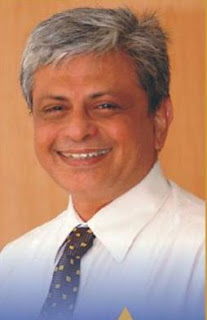The objectives of this short ten minute exercise -
- To learn a management tool that will be helpful in work life
- To apply the learning
- To start a great day using this morning ritual
Step 1 - the warm up
Keep your journal and pen at hand
Sit in a relaxed position with an intent to go into a ‘flow state’ to learn something new
Take three deep, powerful breaths to lock in your focus and start the next step
Step 2 - the learning
About Rational Decision-Making Model
The Rational Decision-Making Model, introduced by Herbert Simon in the 1950s, is used to help managers make decisions logically and systematically. It involves identifying problems, gathering data, evaluating alternatives, and selecting the most rational option. It has become a foundational tool in decision-making processes in business
Situations (examples) where this tool can be best used
- When considering expansion into a new international market
- When deciding whether to invest in AI-driven customer service chatbots
- When finalising a supplier from the final shortlisted three suppliers
The top three mental muscles (competencies) developed by practicing this tool
- Decision-making - Structured approach to making well-informed, timely, and high-stakes decisions
- Problem-solving - Analyzing problems and identifying solutions enhances problem-solving skills
- Critical thinking - Encouraging you to evaluate information, identify biases, and consider multiple perspectives
A corporate story to understand the usage of this tool
Steve Jobs’ (Apple) story
Context - In the early 2000s, Steve Jobs faced a critical decision - how to revolutionize Apple’s product line and create a new market for personal devices. This led to the development of the iPhone in 2007
Applying the Rational Decision-Making Model
Define the problem - Apple needed a groundbreaking product to differentiate itself and drive growth beyond computers and iPods
Identify decision criteria - Market demand, technological feasibility, user experience, cost, and long-term profitability
Weigh the criteria - User experience and innovation were prioritized, followed by market potential and production costs
Generate alternatives - Improve existing iPods, focus on Mac computers, or develop a touchscreen mobile device
Evaluate alternatives - Jobs analyzed industry trends, consumer behavior, and emerging mobile technologies. He rejected a stylus-based design in favor of a touch interface
Select the best alternative - Apple developed the iPhone, combining phone, iPod, and internet functionality, setting a new industry standard
Outcome - The iPhone disrupted the mobile industry, making Apple a global leader in innovation. Jobs’ structured yet visionary decision-making transformed technology and consumer behavior
A story from the World Wars
My personal story
Context
I had a habit of asking people for their views about a decision that I wanted to make. The more I asked the more I got confused.
I had a friend who once told me that he never regretted once he made a decision. I feel his style was great because this approach eliminated the stress one gets doubting whether the decision was good or bad.
My story is about making a decision - A company asked me to conduct a workshop to create awareness about their competency framework. Should I say Yes or No? Let’s see if we can apply the Rational Decision-Making Model here.
Define the Problem - Should I accept the offer to conduct a competency development workshop? Yes/ No
Identify the decision criteria - Alignment with expertise, Time commitment, Long-term benefits, Love for my cousin (the MD of the company), Financial compensation
Assigning weights to the criteria -
Love for my cousin (35%)
Expertise (30%)
Time commitment (20%)
Long-term benefits (10%)
Financial compensation (5%)
Evaluate the alternatives and select - Decision - Accept. Because my expertise plus relationship were more than 50%
Step 3 - the reflection
Sit back, go down memory lane, think of various events in your work life where you could have used this learning.
If nothing comes to mind, think of a situation that would help you answer any one of these interview questions.
- “How do you ensure your decisions are objective and not influenced by biases?” - Explain how the step-by-step approach of the model helps you stay logical
- “Have you ever had to make a high-stakes decision with incomplete information? How did you proceed?” - Highlight how you used available data, risk assessment, and alternative evaluations
- “Can you walk us through a decision that didn’t go as planned? What did you learn from it?” - Explain how you analyzed the failure, adjusted your approach, and refined your decision-making process
Step 4 - the practice
Apply your learning to the situation you selected above.
- Define the problem
- Identify/ weight decision criteria
- Generate/ evaluate alternatives
- Select the best alternative
Step 5 - the victory lap
Celebrate your achievement for a minute. Maybe a quick victory lap doing some energizing exercise?
**
To those who felt, “Implementing new tools requires consistent effort, and many people find it difficult to maintain ongoing use without immediate results. Huge push and followup is required.” - Do you feel that the last ten minutes were worth the effort?
I must tell you that some inspirational companies have institutionalised this tool (Toyota, General Electric, Unilever, Coca Cola)
This exercise is not only about management tools. It’s about building a neural pathway. And it’s about my mantra for creating small daily acts of feeling successful and happy.
Don’t forget to carry this image 👇 in your mind. There could be a great situation where you may want to use the tool. Keep a log of all such situations. This practice will help you when you want to train someone.
My congratulations for your first dose of the day of success and happiness. Have a great day ahead.

No comments:
Post a Comment